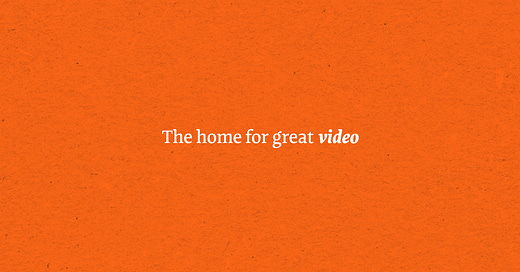In its early days, Substack was often described as a “newsletter tool.” But that’s a misconception. The core idea behind Substack is much bigger. Substack is about creating a media system that’s based on different rules from today’s dominant platforms. It is about starting a movement away from platforms owning people, and towards people owning platforms.
That movement began with writing, but it quickly evolved into much more than that. Over the years, writers and creators have kept pushing Substack to its limits, exploring what’s possible beyond its existing features. They asked for more visual tools and design options, as well as ways to publish audio, and we’ve evolved the platform to support those needs. They’ve responded by expanding the universe of Substack—making it a home for all kinds of creative works, from illustrations to photography, discussions to workshops, and narrations to music.
As more and more writers wanted to host podcasts, we added increasingly sophisticated podcasting features. Podcasting started to explode on Substack. Today, some of the leading revenue-earners on the platform are podcast-focused, including The Fifth Column, Blocked & Reported, and MartyrMade.
We also quietly released a simple video tool, and streams of creative video works followed—from Patti Smith reading poems to her fans from her bedroom, to Amanda Palmer filming herself reading her articles for paid subscribers, to Jenny Walton talking about personal style. In each case, although the format was new, the content itself was built on the powerful foundation of the Substack model: a direct relationship with subscribers, full ownership of the content and mailing lists, and a clear, simple path to monetization. This model rewards different types of work than the ad-based, attention economy model supports. New and interesting things become possible when a creator is producing work for an audience that is already supporting them. The standard ad-based, attention economy rules no longer apply.
Today, we’re doubling down on that model for video. We’re expanding our video capabilities to support the many great shows already being produced on the platform, and to enable the creation of new types of subscriber-supported work built around video. Now it’s possible to host and distribute anything from video podcasts to web shows to feature films on Substack.
Substack’s new video features include:
A video-podcast uploader that automatically splits the audio from the video and sends the file to a podcast feed
A flexible paywall that allows publishers to select a portion of an episode to make free to anyone
A new design for video pages, featuring a large player at the top of the screen
To see these features in action, you can check out some of the shows already on the platform, such as the Newcomer Podcast, Robert Reich’s Coffee Klatsch, TrueHoop’s NBA analyses, and Jessica Reed Kraus’s House Inhabit Podcast. Plus, newly launched shows So Into That from food writer
, and Further Ado from —both feature a lineup of acclaimed guests and make full use of the new video capabilities. While legendary food writers , , and launched Three Ingredients, and veteran journalist launched The Chris Cuomo Project. You can also use our nifty new clipping tool to select a portion of a video’s timeline and share it on social media (try it with the video above by clicking on the scissors icon).The friction in starting a media business based on video has been reduced to almost zero. You can have an idea for a video show at breakfast, and be making money from it on Substack by lunchtime. Thanks to features like Recommendations, Notes, referrals, and cross-posting, you get immediate access to a network of tens of millions of active subscribers. The Substack network today drives 40% of all subscriptions on the platform, and 20% of paid subscriptions. And you don’t have to give up ownership or control along the way: the mailing list is yours, the content is yours, and the community that gathers around your work is yours.
The Substack model subverts the prevailing dynamics of the big online media platforms. When you have a home on Substack as a creator, you become less vulnerable to the vicissitudes of social media. You don’t have to give yourself completely to the whims of the attention economy, or hope to master the advertising game. Instead, you can start to look at the big social platforms as places to find audiences that you can transfer to Substack, where you have a direct relationship, total ownership, and a clear path to making money from subscriptions. Your audience on Substack already knows you and wants to hear from you. Your priority can be in serving them instead of an algorithm.
This, to our mind, represents a healthier relationship for creators to publish and make money from their work online. It’s what the Substack project is all about: a new economic engine for culture. We’ve already come so far with writing and audio—more than 2 million paid subscriptions and more than 35 million monthly active subscriptions. We can’t wait to see where videomakers take it next.
















Share this post